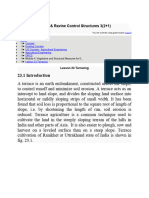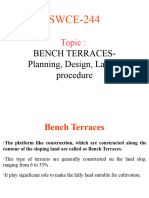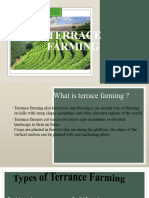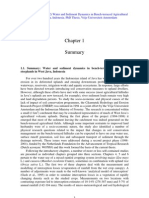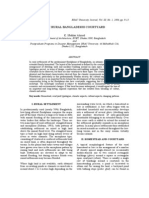0% found this document useful (0 votes)
13 views11 pagesTracking Number November and December Application
The document discusses the construction and design of terraces for controlling water erosion on sloped land. It details the types of terraces, including broad-base and bench terraces, and outlines their design considerations, maintenance, and the impact on soil productivity. Additionally, it provides guidelines for the alignment and construction of bench terraces, emphasizing the importance of reducing runoff velocity to prevent soil erosion.
Uploaded by
tilahun mollaCopyright
© © All Rights Reserved
We take content rights seriously. If you suspect this is your content, claim it here.
Available Formats
Download as PDF, TXT or read online on Scribd
0% found this document useful (0 votes)
13 views11 pagesTracking Number November and December Application
The document discusses the construction and design of terraces for controlling water erosion on sloped land. It details the types of terraces, including broad-base and bench terraces, and outlines their design considerations, maintenance, and the impact on soil productivity. Additionally, it provides guidelines for the alignment and construction of bench terraces, emphasizing the importance of reducing runoff velocity to prevent soil erosion.
Uploaded by
tilahun mollaCopyright
© © All Rights Reserved
We take content rights seriously. If you suspect this is your content, claim it here.
Available Formats
Download as PDF, TXT or read online on Scribd
/ 11


